Lesson 5: Ethics & Primary Sources
Dutch map depicting New Nederlandt including the area of present-day Long Island.
Blaeu, Willem Janszoon. Nova Belgica et Anglia Nova. [Amsterdam]: Blaeu, ca. 1635.
LESSON 5: ETHICS & PRIMARY SOURCES
5.1 Understanding Historical and Cultural Contexts
5.2 Laws, Privacy Rights, Copyright, and Intellectual Property
5.3 Citing Sources
5.1 Understanding Historical and Cultural Contexts
Investigating and analyzing the historical and cultural contexts which influenced and informed creation of primary sources are essential steps in the research process.
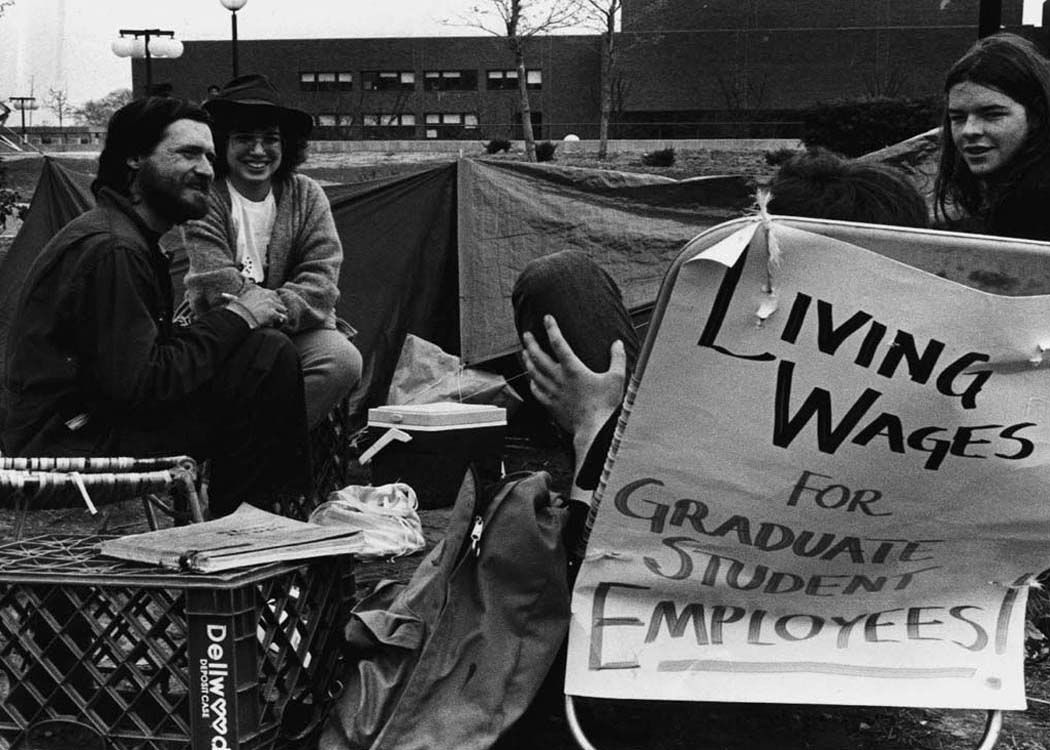
Graduate student "Tent-City" at Stony Brook University, 1987. University Archives,
Photograph Collection, SBU Libraries.
Historical empathy is the ability "to understand the differences inherent between
the lives of current readers and past users; to show emotional engagement with a source;
and to see and appreciate source(s) within their particular historical context."
While it is difficult to put yourself in the exact place of someone else, you may have experienced a similar emotional response or feeling to an event or action.
5.2 Laws, Privacy Rights, Copyright, and Intellectual Property
Using primary sources requires you to understand guidelines for examining and publishing materials.
Permission to Access (Physical Ownership) vs. Permission to Publish (Intellectual
Rights)
Permission to access a collection does not mean you have permission to publish items or even cite them in a publication.
When a donor gives a collection or when an archive purchases a collection, physical ownership is transferred, but intellectual rights may remain with creator.
Additionally, donors may restrict access or permission to publish for a period of time even after a collection is donated. These stipulations are often set when a collection is acquired by an archive and stated in a deed of gift, a legal document which transfers physical and/or intellectual ownership.
Reproducing Sources
Policies for reproducing materials in any format do vary, and can determine how you
access and consult primary sources. It is important to inquire early in the research
process about guidelines for reproducing primary source materials.
Methods of reproducing items include photography, photocopying, filming, and scanning.
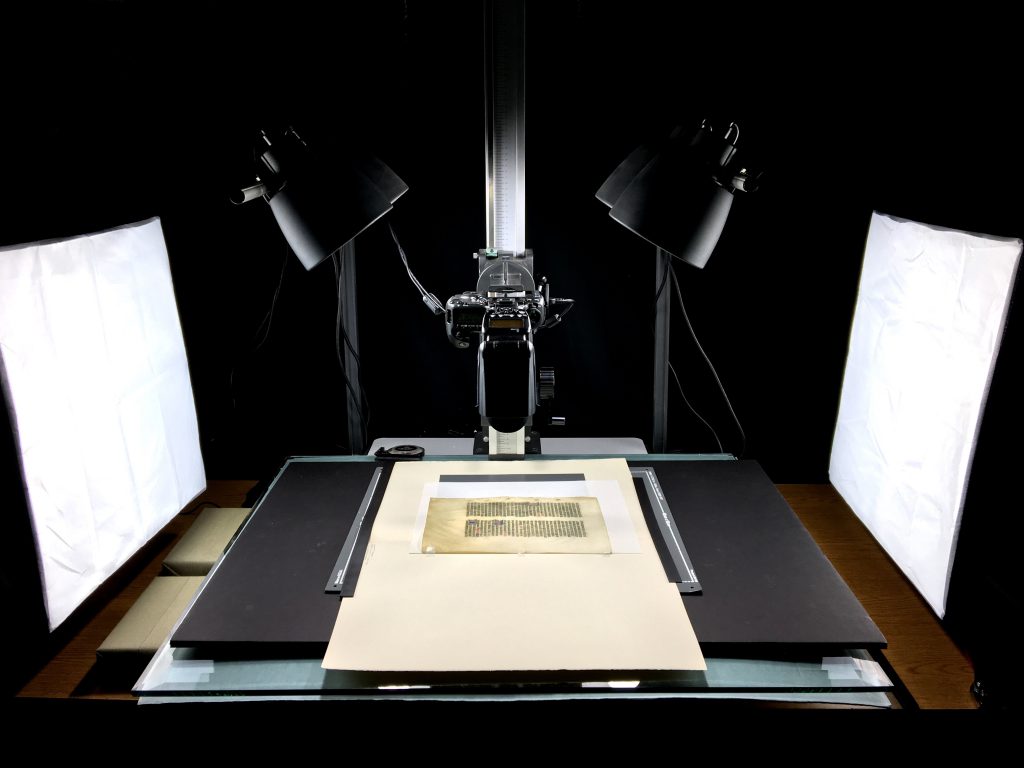
Photography of a manuscript by SBU Libraries.
Local policies on photography and making copies are dependent upon the individual library or institution. A number of factors may affect using and duplicating materials for example copyright, donor restrictions, fragile condition, and appraised value.
Privacy and Public Domain
Works in the public domain do not have copyright or intellectual restrictions due
to the passage of time or forfeiture. They are owned by the public and permission
to use them is not needed.
However, ethical and privacy issues should still be considered and assessed if works will be reproduced or cited in research. Sensitive content may be discovered in collections, e.g., personal medical records, social security numbers, and financial documents. Privacy issues can arise, so consult with a librarian or archivist about the parameters of using collections.
5.3 Citing Sources
For ethical reasons, it is critical to acknowledge and cite the sources you use in research and writing.
Citations are extremely helpful to fellow researchers, who use them to further their own studies.
You should always check with your professor about the style guidelines to use in your specific assignment. Generally, APA (American Psychological Association) is used for education, psychology, and social sciences; MLA (Modern Language Association) is used for humanities; and Chicago/Turabian is used by the arts, business, and history.
Examples of how to cite a variety of primary sources are oultined below. The citations are adapted from examples provided by theLibrary of Congress. Sources for citation structures:
- APA: American Psychological Association. APA Style Guide to Electronic References. Washington, DC: American Psychological Association, 2012.
- Chicago: University of Chicago Press Editorial Staff. Chicago Manual of Style. Chicago: University of Chicago Press, 2017.
- MLA: Modern Language Association of America. MLA Handbook. Eighth edition, New York: The Modern Language Association of America, 2016.
5.3.1 Archive and Manuscript Example
An educator and book seller, Otto F. Ege (1888-1951) intentionally separated and systematically removed pages or leaves from books. A self-proclaimed biblioclast or "book-breaker," Ege rationalized that disbinding volumes provided the masses with opportunities to study and to have tangible experiences with authentic medieval manuscripts. As a result, modestly funded libraries and smaller institutions were able to acquire manuscript specimens at a reasonable cost.
Special Collections owns portfolio "No. 19" of the 40 unique sets created by Ege. The digital collection features photographs of the Ege-compiled portfolio Fifty Original Leaves from Medieval Manuscripts, Western Europe, XII-XVI Century. The University Libraries created the collection to increase accessibility to the
manuscripts and to aid efforts by students and scholars to "virtually" reconstruct
the books from which the scattered leaves were taken.
Leaf 15: "Missal: Missale Bellovacense." Latin, 13th century. Ege, Otto F. Fifty Original Leaves from Medieval Manuscripts,
Western Europe, XII-XVI Century[Columbus, Ohio?]: [publisher not identified], [1953?].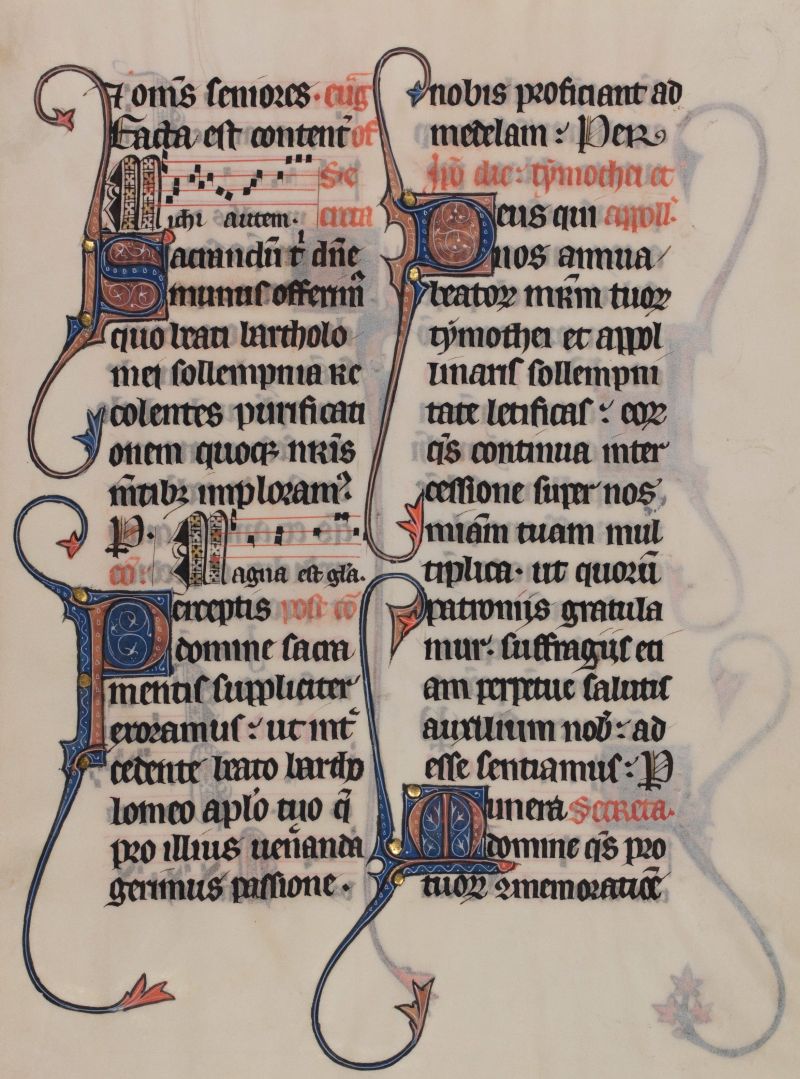
Chicago or Turabian Citation Structure
- Author's last name, first name, middle initial.
- Title of document (in italics).
- Format (letter, manuscript, pamphlet…).
- Publisher city: publishing company, copyright date (if given).
- Source (in normal font), collection name (in italics). If no collection name, name of division where item is housed with no punctuation.
- Medium.
- URL (use bibliographic record URL or shorter digital id if available at bottom of bibliographic record).
- Accessed date (in parenthesis).
Ege, Otto F.Fifty Original Leaves from Medieval Manuscripts, Western Europe, XII-XVI Century. [Columbus, Ohio?]: [publisher not identified], [1953?]. https://library.stonybrook.edu/digital-projects/otto-f-ege-fifty-original-leaves-from-medieval-manuscripts
5.3.2 Map Example
Special Collections has among its map and atlas holdings the historically important Atlas of Long Island by F.W. Beers (1839-1933). Members of the Beers family were leading publishers of state and county atlases after the Civil War. F. W. Beers, D. G. Beers, and J. B. Beers had their own publishing companies. Notable features of the Atlas of Long Island are notations of property owners, buildings, businesses, and statistical information.
Page 164 (Stony Brook) from Beers, F. W. Atlas of Long Island, New York: From Recent and Actual Surveys and Records.
New York: Beers, Comstock and Cline, 36 Vesey Street, 1873. Special Collections, SBU
Libraries.
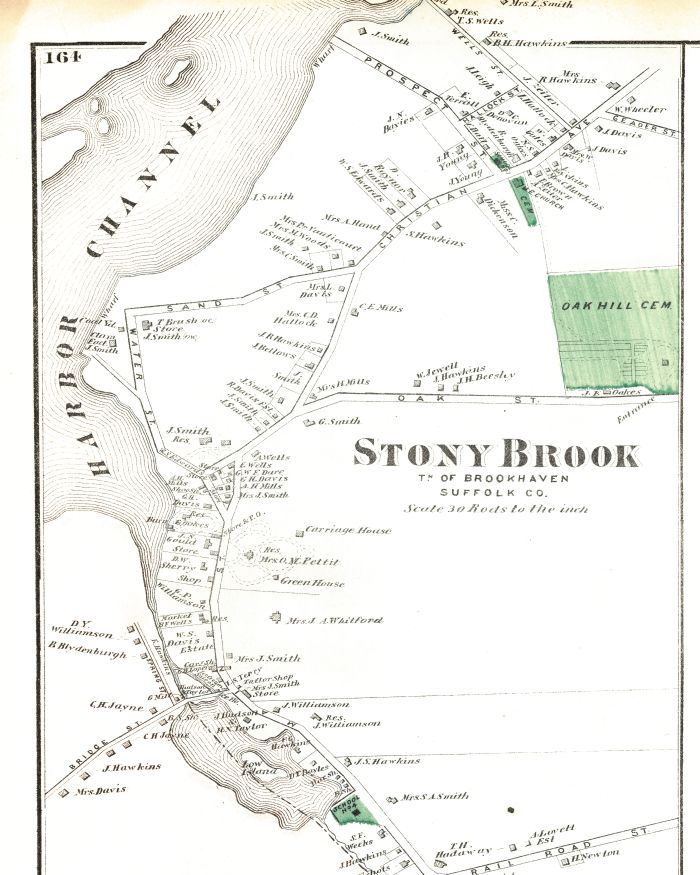
Chicago or Turabian Citation Structure
- Author's last name, first name, middle initial (if given, or person responsible for content).
- Title of document (in italics) [shorten to meaningful limits].
- Format (map, chart).
- Publisher city: publishing company, copyright date.
- Source (normal font), Collection name (in italics). If no collection name, name of division where item is housed with no punctuation.
- Medium.
Example: Beers. F.W. Atlas of Long Island, New York: from Recent and Actual Surveys and Records. Map. New York: Beers, Comstock and Cline, 1873. From Special Collections, Stony Brook University Libraries. Map.
5.3.3 Audio Interview Example
Abbie Kearse is a Peabody Award winning television producer and writer who worked for MTV News, a division of Viacom, from 1990 to 1998. In 1981, at the age of sixteen she joined the staff of WUSB 90.1 FM, Long Island's largest, non-commercial, radio station that is located at Stony Brook University. Before becoming an official WUSB on-air staffer, Kearse interned for the radio station earlier that year.
The collection she donated includes three reel-to-reel audio recordings produced in 1982. The recordings are a blend of music and the interviews Kearse conducted with musicians Billy Idol, David Johansen, and Eric Bloom of Blue Öyster Cult.
APA Citation Structure
- Interviewee last name, first initial, middle initial.
- Date of interview (in parentheses). (Year) or (Year, Month Day). Use n.d. for no date.
- Title of the interview (if any) with only the first word and proper nouns capitalized.
- Format of item (in brackets) [video, transcript, etc.].
- URL (use bibliographic record URL or shorter digital id if available).
Example: Idol, Billy (1981, October 11). Conversation with Billy Idol. Interview conducted by Abbie Kearse in Stony Brook, New York [Audio]. Retrieved from https://ir.stonybrook.edu/xmlui/handle/11401/2963.
5.3.4 Photograph Example
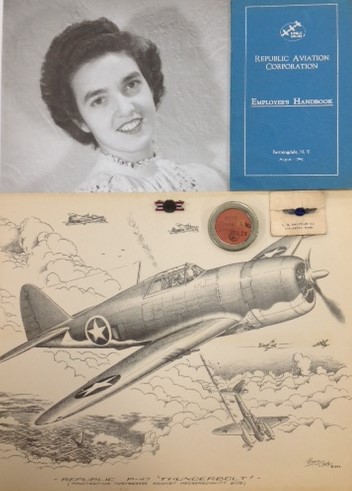
The Edith Gentile Collection documents one of the first female stainless steel welders to work for Republic Aviation Corporation in Farmingdale, New York. Ida Gentile (known as Edith) was born in 1924 to Italian immigrant parents and was a lifelong resident of Long Island. A respected welder, she worked on Republic P-47 Thunderbolt airplanes in the 1940s in support of the war effort and was awarded the Army-Navy Production emblem, "a much sought after award for excellence in stainless steel welding."
The collection is comprised of World War II era papers and artifacts about the production of the Republic P-47 Thunderbolt airplane and document Edith's contributions to the manufacturing of them.
MLA Citation Structure
- Artist last name, artist first name.
- Title (italicized).
- Date of composition.
- Format (photograph).
- Institution that houses the work, city where the piece is located.
- Title of the database or Web site (italicized).
- Medium (Web).
- Date of access.
- URL (in angle brackets) – optional.
Example: Photograph of the Edith Gentile Collection. n.d. Photograph. Edith Gentile Collection, Special Collections, Stony Brook University Libraries. Web. 15 June 2019. <https://library.stonybrook.edu/2016/03/29/edith-the-welder-papers-of-edith-gentile>
TO COMPLETE LESSON 5:
1. Click here to access the QUIZ for Lesson 5 - it will open in a new window.
2. Answer all of the questions and submit your responses.
3. Return to this page and click below on "Next: Continue to Lesson 6."
